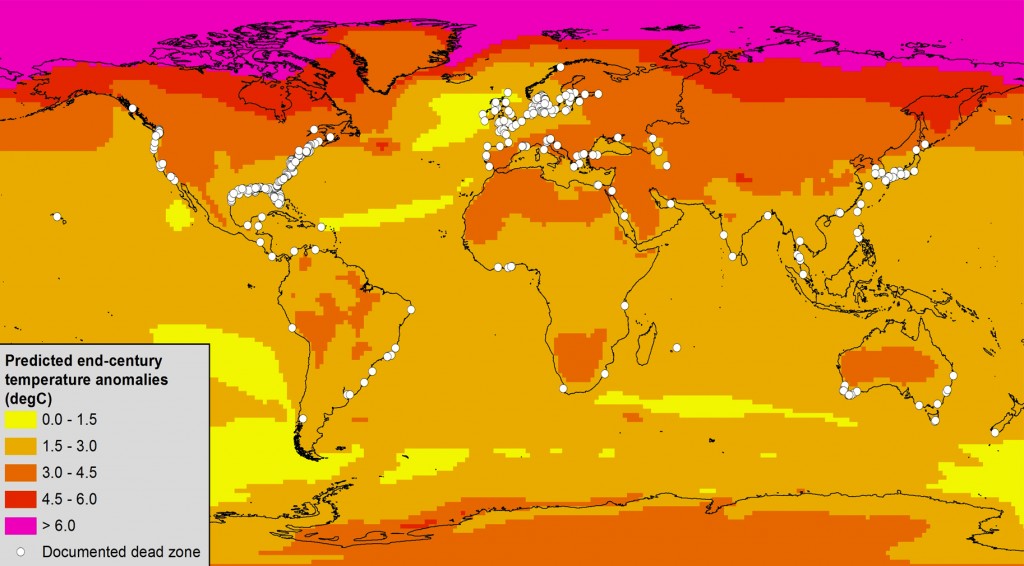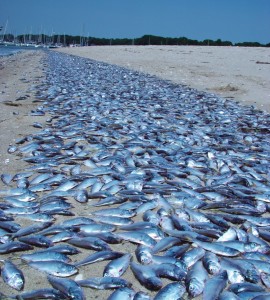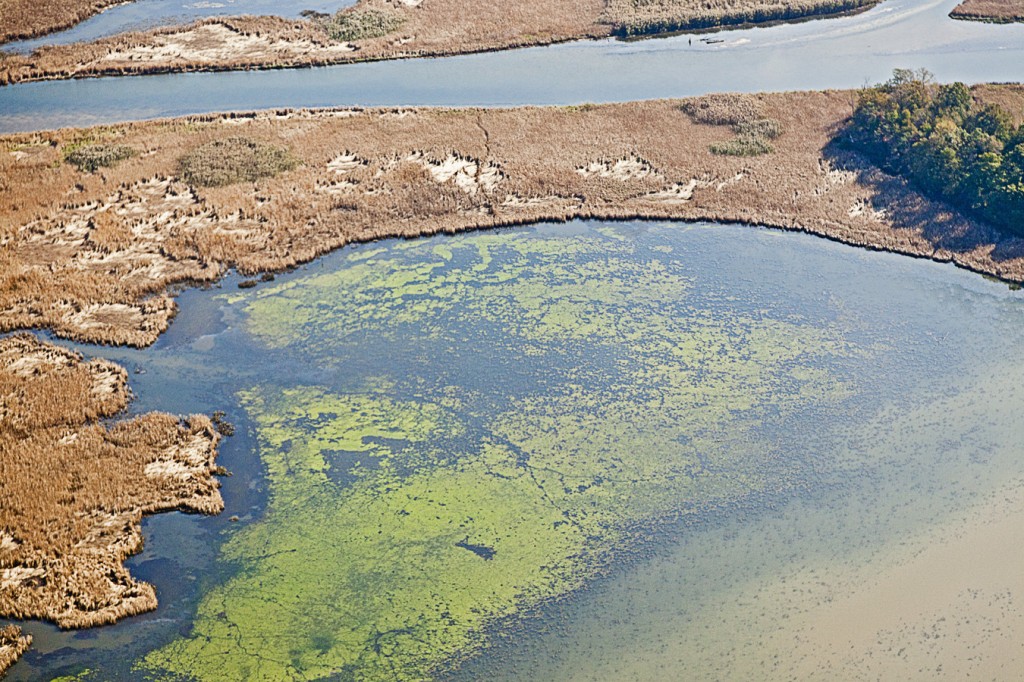by Kristen Minogue
A full 94 percent of the world’s dead zones lie in regions expected to warm at least 2 degrees Celsius by the century’s end according to a new report from the Smithsonian Tropical Research Institute and the Smithsonian Environmental Research Center published Nov. 10 in Global Change Biology. The paper states that warmer waters—mixed with other climate change factors—make for a dangerous cocktail that can expand dead zones.Dead zones form in waters where oxygen plummets to levels too low for fish, crabs or other animals to survive. In deeper waters, dead zones may last for months, as with the annual summer dead zone in the Chesapeake Bay. Temporary dead zones may occur in shallow waters at night. The largest dead zones in the Gulf of Mexico and Baltic Sea can cover more than 20,000 square miles of the sea floor. The number of dead zones across the world is growing exponentially, doubling each decade since the 1960s.
“They’re having a big impact on life in the coastal zone worldwide,” said Keryn Gedan, a co-author and marine ecologist at the Smithsonian Environmental Research Center and the University of Maryland. “A lot of people live on the coast, and they’re experiencing more fish kills and more harmful algal blooms. These are effects of dead zones that have an impact on our lives.”
The main culprit is massive algal blooms, which pull oxygen from the water when they respire or decompose. Algal blooms form from excess runoff of nutrients like nitrogen and phosphorus. But climate change could exacerbate the problem.
Warmer waters hold less oxygen, the authors explain in the paper, enabling dead zones to form more easily. In an unfortunate twist, when temperatures rise, animals like crabs, fish and oysters need even more oxygen, which the ocean is less able to provide.“Our study is the first to consider more than a dozen direct and indirect effects of climate change on dead zones, and suggests that we’ve underestimated its contribution to the growing dead zone problem and impacts on marine life,” said Andrew Altieri, the study’s lead author and ecologist at the Smithsonian Tropical Research Institute.
Altieri and Gedan looked at a database of more than 400 dead zones around the world and then overlaid them on a map of the annual temperature anomalies expected to occur in each region. Under a middle-of-the-road scenario, 94 percent of dead zones are in areas expected to warm by 2 degrees C or more by 2099. Then they did a thorough literature review, synthesizing information from many fields to predict how the various effects of climate change could work together to impact dead zones.

Map of known dead zones (white dots) and predicted changes in annual air temperature for 2080-2099 vs. 1980-1999. Air temperature predictions are based on a “middle-of-the-road” scenario of fossil fuel use. (Keryn Gedan and Andrew Altieri/Smithsonian)
Besides making it harder for water to hold oxygen, rising temperatures stifle ocean mixing that can keep dead zones in check. Dead zones near the bottom can dissipate if waters from the surface sink, injecting them with fresh oxygen from above. But since warmer waters float, this life-giving conveyor belt grinds to a halt.
Other factors besides temperature come into play. Sea-level rise leads to the expansion of bays and estuaries, raising the overall volume of water susceptible to low oxygen. The same rising waters also can destroy wetlands. Wetlands are one of the best defenses against dead zones because they filter out excess nutrient pollution that feeds massive algal blooms.
Shifting ocean currents could further expand dead zones by flooding them with more oxygen-starved waters. This is already happening in the St. Lawrence Estuary where cold, oxygen-rich waters from northern Canada have declined and are being replaced by warmer, oxygen-poor waters from the central North Atlantic.
Altieri and Gedan uncovered just one possible positive impact of rising temperatures: Since animal metabolism spikes under higher temperatures, tiny crustaceans, like copepods, and other zooplankton could eat up the algal blooms that create dead zones in the first place. “We do see some cases where algal blooms are smaller in warmer years, because the grazers are able to control algae better,” Gedan said. But, she added, it is unclear how that will interact with the other climate change impacts they have witnessed.
Altieri suggests there is an important lesson to learn from their study: “There is a lot of inertia when it comes to global climate change, but we can counteract climate effects on dead zones through local control of nutrient pollution.”
Fish kill image used courtesy of the Creative Commons license here.



